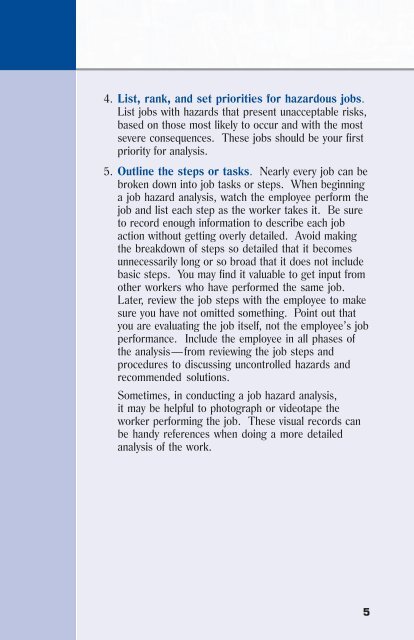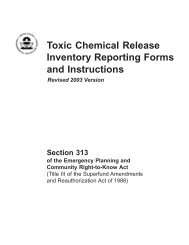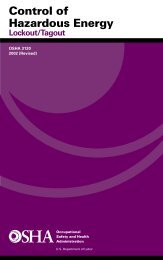OSHA 3071 - Job Hazard Analysis - Seton
OSHA 3071 - Job Hazard Analysis - Seton
OSHA 3071 - Job Hazard Analysis - Seton
Create successful ePaper yourself
Turn your PDF publications into a flip-book with our unique Google optimized e-Paper software.
4. List, rank, and set priorities for hazardous jobs.<br />
List jobs with hazards that present unacceptable risks,<br />
based on those most likely to occur and with the most<br />
severe consequences. These jobs should be your first<br />
priority for analysis.<br />
5. Outline the steps or tasks. Nearly every job can be<br />
broken down into job tasks or steps. When beginning<br />
a job hazard analysis, watch the employee perform the<br />
job and list each step as the worker takes it. Be sure<br />
to record enough information to describe each job<br />
action without getting overly detailed. Avoid making<br />
the breakdown of steps so detailed that it becomes<br />
unnecessarily long or so broad that it does not include<br />
basic steps. You may find it valuable to get input from<br />
other workers who have performed the same job.<br />
Later, review the job steps with the employee to make<br />
sure you have not omitted something. Point out that<br />
you are evaluating the job itself, not the employee’s job<br />
performance. Include the employee in all phases of<br />
the analysis—from reviewing the job steps and<br />
procedures to discussing uncontrolled hazards and<br />
recommended solutions.<br />
Sometimes, in conducting a job hazard analysis,<br />
it may be helpful to photograph or videotape the<br />
worker performing the job. These visual records can<br />
be handy references when doing a more detailed<br />
analysis of the work.<br />
5

















